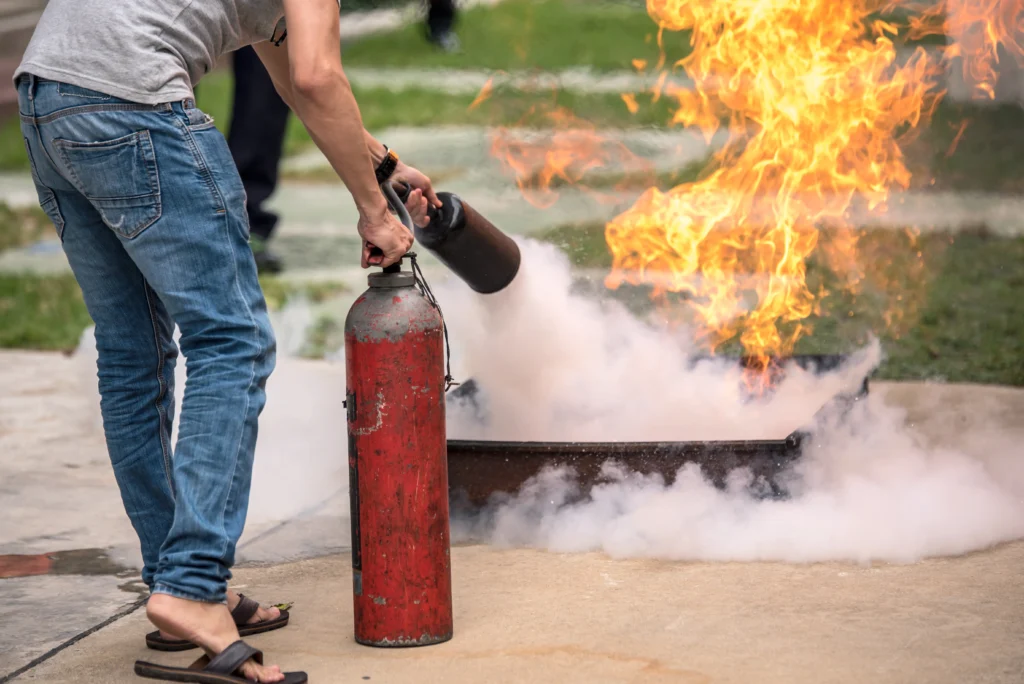A fire emergency can happen at any time, and every staff member has a role to play in ensuring safety. It is not just the responsibility of the fire warden or the management team—everyone in the workplace must act quickly and efficiently to prevent chaos and reduce risks. Understanding individual responsibilities helps protect lives, minimize damage, and maintain order during an evacuation. Whether it is raising the alarm, guiding colleagues to exits, or helping those who need assistance, being prepared is crucial. Knowing what to do in such situations can make all the difference in ensuring a smooth and safe evacuation.
Raising the Alarm and Notifying Authorities
The first and most important step in a fire emergency is raising the alarm. If any staff member notices smoke, flames, or any signs of fire, they must act immediately. Delaying even for a few seconds can put lives at risk. The fire alarm system should be activated to alert everyone in the building, and emergency services must be contacted without hesitation. Employees should be familiar with the nearest fire alarm points and emergency contact numbers. Quick and clear communication with the fire department ensures that help arrives as soon as possible, preventing further spread of the fire.
Assisting in Evacuation Procedures
Every staff member must know the designated evacuation routes and assembly points in case of a fire. When the alarm sounds, employees should not panic or attempt to gather personal belongings, as this wastes valuable time. Instead, they should proceed calmly to the nearest exit while assisting colleagues who may need help. Those working with vulnerable individuals, such as people with mobility issues, should provide support to ensure a safe exit. Blocking emergency exits or using elevators must be avoided. Once outside, staff must head to the assembly point and wait for further instructions from fire marshals or emergency responders.
Preventing the Spread of Fire
Although the primary focus should be on getting to safety, staff can take certain actions to prevent the fire from spreading. If possible and safe to do so, employees can close doors and windows to contain the flames. Fire extinguishers may be used on small fires, but only if staff have received proper training and the fire is manageable. Attempting to fight a large fire without professional help is extremely dangerous and should be avoided. The key priority is ensuring that no one remains inside the building and that emergency services take over as soon as possible.
Following Instructions from Fire Wardens and Authorities
During a fire emergency, fire wardens and emergency responders take control of the situation. All employees must listen carefully to their instructions and follow them without delay. Staff should avoid returning to the building until it has been declared safe by the fire brigade. Providing accurate information about missing persons or hazardous materials inside the premises can assist firefighters in managing the incident effectively. Ignoring instructions or spreading false information can create confusion and put more people in danger. Cooperation and discipline during an emergency are essential for a successful evacuation and resolution.
Staying Prepared for Future Emergencies
Fire safety is not just about responding to an emergency—it is about being prepared before it happens. Staff should regularly participate in fire drills to familiarize themselves with escape routes and procedures. Understanding how to operate fire extinguishers and recognizing fire hazards in the workplace can reduce risks significantly. Employers should provide training sessions on fire safety, and employees must stay aware of their responsibilities. Keeping workplaces free from clutter, ensuring fire exits remain unblocked, and reporting any potential fire hazards to management all contribute to a safer work environment for everyone.








